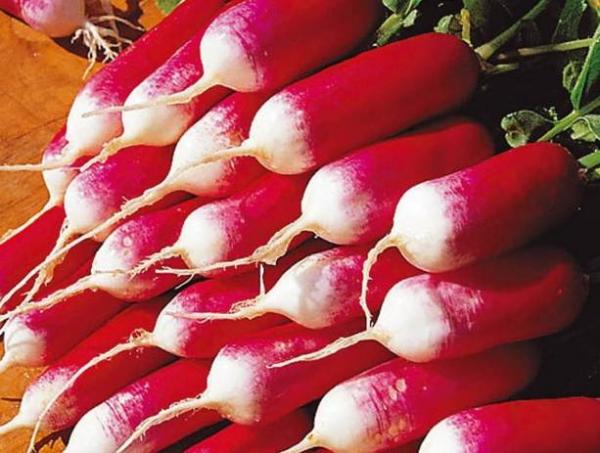Radish belongs to the popular spring vegetables. Its value is due to simplicity, ease of maintenance, precocity, the possibility of early planting in open ground, utility and taste characteristics. While other vegetable crops are at the seedling stage, its succulent roots already supply the human body with beneficial substances, making it possible to compensate for the deficiency of vitamins after a long winter.
Table of contents
The optimal time for planting vegetables
Radish is planted in the open ground earlier than other vegetable crops because of its ability to withstand cold and even withstand night frosts with ease. You can start sowing in late March or early April. To speed up the germination process, crops should be covered using film material. Early ripening varieties of radishes allow you to harvest the first crop within three to four weeks after germination.
Early varieties should be planted in early June, and middle-ripening - in July, only when using seedling methods. You can also sow late-ripening varieties in open ground at the end of August or September.
And brave gardeners sow a vegetable before winter before the onset of the first frost.The podzimny sowing allows to receive a crop earlier than any early variety planted in spring has ripened.
Preparing to work on sowing radishes
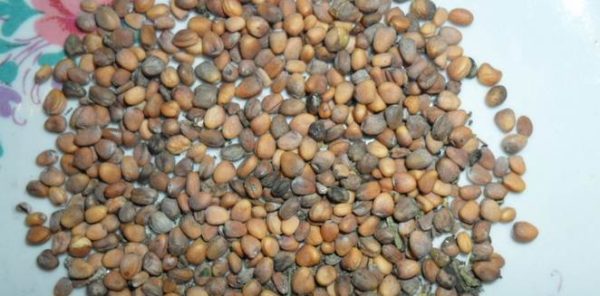
Planting radish is a simple procedure. Common problems that may arise in the process of growing a culture are the looseness of root crops, bitterness, and the formation of peduncles before harvest. But all these difficulties are resolved by competent choice of the variety and the observance of the methods of cultivation. therefore for a rich harvest, it is important to pre-select high-quality material for planting and prepare the soil.
Selection and preparation of seeds that are going to plant
The best option is to buy seeds in special stores. First you need to sort them out, sorting by size. The pledge of a friendly germination and development of the largest root crops are considered seeds of a length of 3 cm. Seed before planting seeds in water or a damp cloth for 24 hours. And before sowing, soak in hot water for 20 minutes to protect against the development of various diseases. After warming, cool, enrich them with useful trace elements, by treatment with growth stimulants, and dry thoroughly.
Preparation of the soil in the spring, we will provide good early shoots
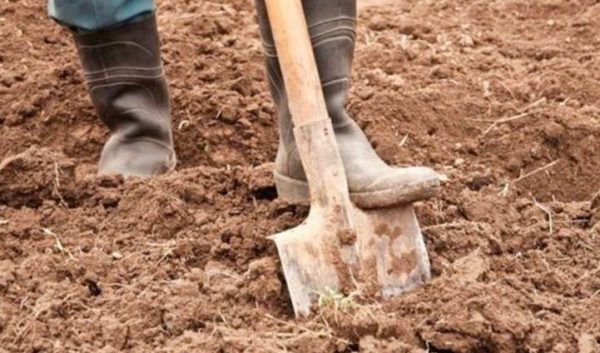
For full growth and development of radish need to prepare a fertile soil. Culture prefers loose, nutritious, well-drained soil with an optimum acidity of 5.5-7.0.
Choosing a site to give preference to a warm, protected from strong winds. What matters is how much sunlight per day falls on the landing site. In accordance with the norms of crop rotation, tomatoes, potatoes, peppers, cucumbers and legumes are considered the best precursors.
The ideal solution to plant radishes every year in the new garden, which will help improve the crop rotation of the garden.
The soil should be prepared in autumn. To do this, clean the plot of plant residues, dig and enrich with compost or humus. With the onset of spring, as soon as the earth thaws under the warm rays of the sun,before planting a vegetable, it is necessary to dig up again, adding mineral substances.
The right landing technology, we plant at the right depth
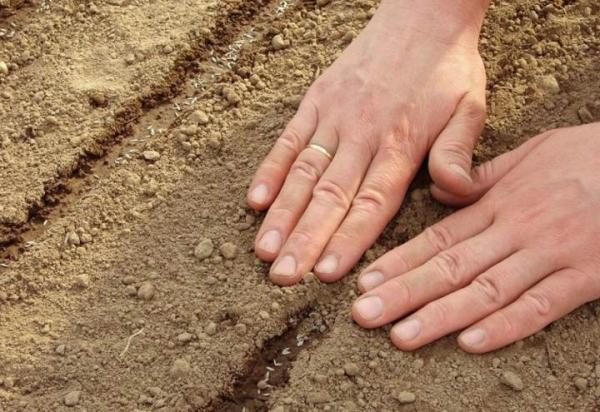
Growing radish in the open field provides a well-carried out planting, which includes the following operations:
- To level the prepared bed, mark the grooves for planting, keeping a distance of 10 cm between them. Acceptable embedding depth is 1 cm. Deep embedding of seeds will lead to a change in the shape of the root crops.
- Planting material to plant in the grooves, pre-watered with hot water. Sow the seeds should be at a distance of 5 cm between plants. Thicker is not worth it, otherwise you will have to spend the energy to get them seated.
- Sprinkle with soil and compact well to achieve maximum adhesion of the earth to the seed plane, which will accelerate germination.
- After sowing the beds, water and fertilize with wood ash.
When the weather conditions are comfortable, shoots will appear for 3-4 days.
Planting vegetables in egg cells
You can plant radishes in the cells from under the eggs. This method has been tested and tested by many gardeners and is recognized as the best. As a result of this approach, ripe radish has an even and neat shape. BUT thinning is not required during standard care.
For this you need:
- Prepare a bed by digging and loosening the traditional method. After that, the ground must be leveled.
- In the cells, cut the bottom with a knife and lay it on the ground, pressing it down slightly with the holes to the ground. Fill the cells with soil and put one seed in each well.
- Top crops to fill with soil and water carefully.
When sown in egg trays, radishes will sprout with the same activity as with the conventional method. In addition, this will automatically follow a certain landing pattern.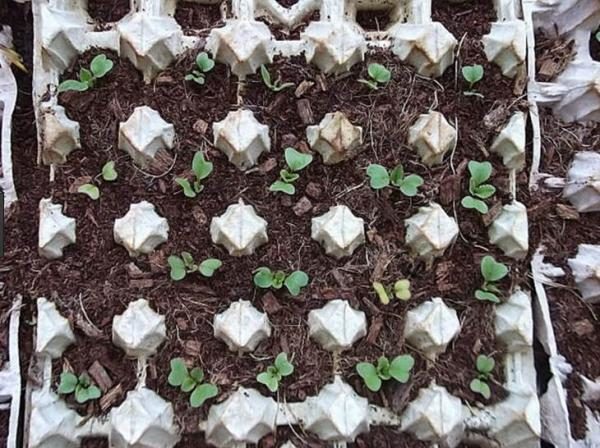
Planting radish in egg cells
Caring for a freshly planted plant, watering mode
Further care for crops includes the following activities:
- Maintain a certain moisture regime.
An important care operation is considered to be watering, as growth, development and yield of a vegetable crop depend on it. Therefore, after planting, it is necessary to irrigate daily, preventing the topsoil from drying out, otherwise the taste qualities of the roots will deteriorate, they will become bitter, and also decrease in size. Morning and evening are favorable times for watering. - Thinning of frequent shoots.
The procedure should be carried out on the fifth day after germination, while leaving stronger plants. For a good ripening and high-quality fruiting of the vegetable seedlings should be located at a distance of 5 cm from one another. - Loosening the soil.
Excessive moisture and its stagnation can lead to cracking of root crops or the appearance of diseases such as keel, black rot. To prevent this from happening, you need to loosen the soil after watering. Do it carefully, without damaging the root and growing root crop. - Top dressing by a complex of fertilizers.
Culture responds well to organic and mineral nutrition. After each application of fertilizer, mulching should be carried out using a mixture of peat and rotted manure. This will contribute to the absorption of fertilizers, as well as protect the plant from weed growth and keep a moist environment. - Timely measures to protect against diseases and pests.
It is necessary to constantly inspect the plants in order to identify the lesions of its diseases and pests and, if a problem is detected, to correctly prescribe treatment using proven protective equipment.
Means for tillage and fertilizing
Secrets of growing in open ground, thinning and fertilizing
There are some secrets that allow to grow high-quality root crops in open ground conditions.
- Each vegetable grower can face such a problem when the plant goes to the arrow, then blooms. In order to avoid this, it is necessary to avoid sowing density, dry soil and low temperature indices.
- You can not make in the soil fresh manure, from this radish will be hollow inside. Top dressing should be carried out using rotten organic matter.
- When planting, it is advisable to sow one seed at a time, since thinning damages the root system of the main plant, resulting in poor growth and the formation of arrows.
- When growing can not use chemicals, because a high probability of falling into food. Therefore, radishes need to be sprayed, only using folk remedies, which can be infusions of garlic, wormwood, celandine, tobacco chips.
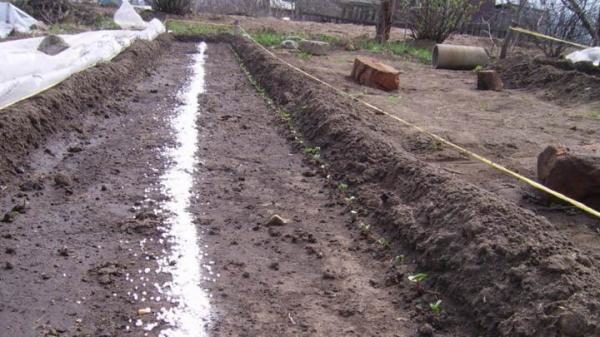
The first feeding radish seedlings
Pests and control of them
Therefore, it is important to establish the first signs of the disease in time and produce appropriate measures that will help the plant to deal with them faster.
| Diseases | ||
|---|---|---|
| Title | Description | Control measures |
| Quila | Presence on the surface of the fetus blistering and growths that becomes cause yellowing and fading leaves |
Struck keel plant dig and burn, and the soil covered with slaked lime. For 4 years vegetable culture on do not cultivate this area |
| Mealy dew | On the surface of leaves, petioles white bloom mealy color which time acquires light brown tint |
Crop rotation and processing plants by means of overwhelming the development of this disease |
| Bacteriosis | Root crops become covered with slime and begin to smell rot. There is yellowing. radish leaves |
To fight you need to handle Bordeaux liquid |
| Pests | ||
| Cruciflo flea | Small insect having dark color and metallic the brilliance damages the leaves disrupting the process photosynthesis. As a result, the plant stops growing and dies |
For prevention, organize the right care.In the event of injury, treat radish appropriate preparations. Before than to treat insecticides, you need try sparing folk methods |
| Whitefish | White butterfly larvae eat leaves from the edges or gnaw through holes what do irreparable harm culture |
|
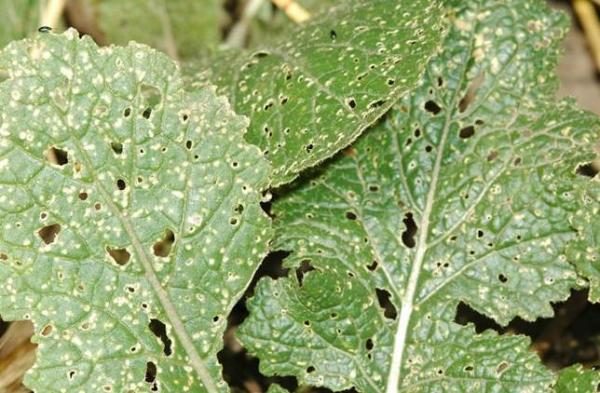
Harvest, which managed to grow
Radish should be removed selectively, as aging. When you reach a medium-sized root, you need to carefully pull it out, taking it by the tops and pulling it up, and you can serve it to the table. And leave the rest to grow to technical ripeness.
Radishes are easy to collect, it is important to do this in a timely manner. But even if you are late with the collection of this vegetable, in this case, you can get seeds for the next planting.
Even novice gardeners can cope with simple rules of planting and care. These rules of course vary in the Leningrad region, in the Urals or in Krasnodar. It is important to timely plant radishes on the bed and create comfortable conditions for it to grow.
